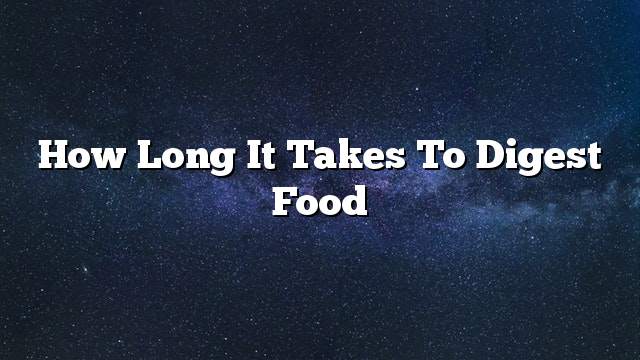the food
The body of living organisms generally needs to eat food to feed the nutrients that give energy to the organism and thus the ability to carry out various biological processes. When a person has low blood glucose or fat, he or she sends signals to the brain’s appetite center to induce a person to feel hungry and eat.
After eating the food in a solid or liquid form, it enters a long stage inside the body to be transformed into a form through which human beings can benefit from the nutrient elements so that they can penetrate through the cell membranes of the cells of the body. This process is called digestion.
Duration of digestion
The digestion lasts for days from the moment the food enters the mouth until it comes out of the body in the form of waste, which varies from person to person depending on the nature of the body, ranging from 24 hours to 72 hours.
Digestion Process
The digestive system is fully digested to extract nutrients and take advantage of the body, and then disposal of waste to the urinary system for disposal outside.
The digestive system starts from the mouth, where the first steps begin in the digestion process and ends with the anus. It is characterized by a long, winding channel that has worming movements that help digestion. It also ensures that the food passes in one direction so that it does not cause problems for the organs. A member of another changes its shape and properties and contains acids as a result of digestion.
When the food enters the mouth, a mechanical digestion begins, cutting food into small pieces for ease of passage in the digestive tract. The tongue helps in this task to stir food. A simple chemical digestion occurs through the saliva. Simple sugars are converted to glucose, Starch to simple sugar.
The food travels to the pharynx and then the esophagus to reach the stomach, and stays in the stomach from five hours to six hours, the digestive juices are excreted with the movements of constriction and expansion of the muscles of the wall, the food into a liquid called Kimos, and then moves to the small intestine to complete the digestion.
The small intestine then excretes pancreatic, bile, and intestinal enzymes, digesting all the remaining substances such as proteins, fats and the remaining sugars. The absorption of water and mineral salts continues and the absorption of building units begins.
The remainder of the food is transferred to the large intestine, which continues to absorb the water. Some nutrients are analyzed with the help of the bacteria in it, and the waste is collected in preparation for disposal.
